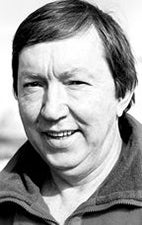The season of polecat love
Published 5:45 am Saturday, February 17, 2018
Now that winter is rearing its icy head, I am not one of those people who wax nostalgic about fireplaces and heating their homes with open fireplaces or wood/coal burning stoves or furnaces.
Well, we almost allowed February to slip away without devoting a column to the season of polecat love.
It simply would not feel like February if we failed to write something skunky while the polecats are acting funky. So here goes and please bear with me. As the Windows updates to my computer frequently advise, “this may take a while.”
During the early 1970s, I had a job that required about 30 of us “County Coordinators,” from all over eastern Kentucky, to be in Frankfort for day-long meetings on a frequent basis. On the way home, just past the easternmost Frankfort access lane to I-64 toward Lexington, there was a farm with a substantial herd of mostly black cattle with broad white bands encircling the middle of their torsos. It was nearly impossible to drive by the field without seeing them.
It was well known that one of the fellows in our group, from either Morgan or Elliot County, as I recall, raised cattle on the side. So one day one of the women in our group asked him about that strange and different breed of cattle we were seeing out there near the interchange.
Our cohort, tongue firmly in cheek, said, “Oh that’s an experiment UK is trying to pull off. They were attempting to cross breed skunks with black Angus cattle to get black cows with white stripes down their backs, but, as you can plainly see, the stripe came out all wrong. They still called them polecows.”
The lady, tongue even more firmly in cheek, replied, “Well I sure hope they don’t make that terrible stench every time they have to pee.”
The jaw-dropped look on our farmer’s face, when he realized he’d been had, was even funnier than her reply. I’m pretty sure they heard our laughter at the Capitol some two miles down the road.
We later learned that the cattle were called Belted Belgiums, that the breed originated in western Europe, and that this particular herd was probably native to Scotland. The herd was, in fact, an experiment to see how well they would perform as market cattle in Kentucky. I don’t get to Frankfort very often so, for all I know, they may still be right there. I promise you, faithfully, that it would be difficult to miss them if they’re still there.
In any event, Loretta and I drove to town over the week end and, about 4 miles from Paint Lick, going toward Lancaster, I spotted a lone Belted Belgium steer grazing in a pasture on the north side of U.S. 52.
I commenced laughing out loud because I suddenly remembered the afore-told polecow story.
Loretta wanted to know what I’d found to be so funny and I told her I’d tell her later because I was concentrating on counting dead skunks at the moment.
For the record, as of late last Saturday afternoon, there were six polecat carcasses, either lying in the road or right beside it, on the 8 mile stretch of 52 between our house and Lancaster city limits. That’s about average for this time of year.
Interestingly, too, is the fact that two dead coyotes and one dead buzzard were also lying there. The buzzard had, understandably, been trying to clean up the road. I presume the coyotes were looking for a free meal of skunk steak.
So please be careful out there. If you hit a skunk in the middle of the road, it will not be the only victim. You may not suffer any physical injuries but it may be several days before you will want to get back into the vehicle you were driving at the time of your polecat encounter.
Reach longtime Enterprise columnist Ike Adams at ikeadams@aol.com or on Facebook or 249 Charlie Brown Road, Paint Lick, KY 40461.






